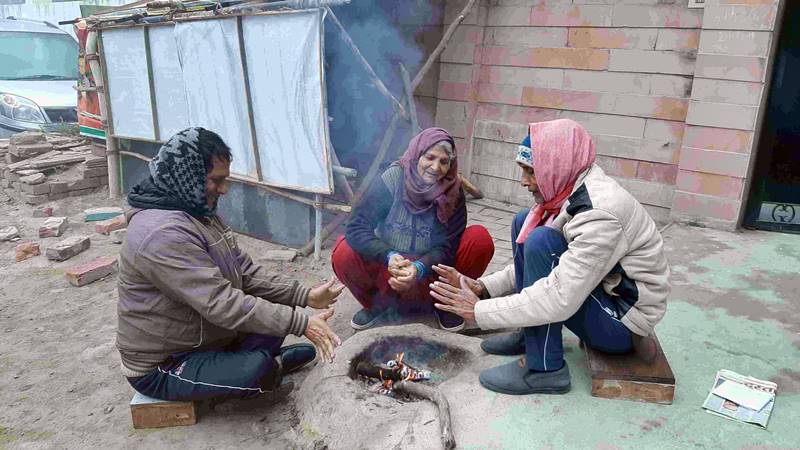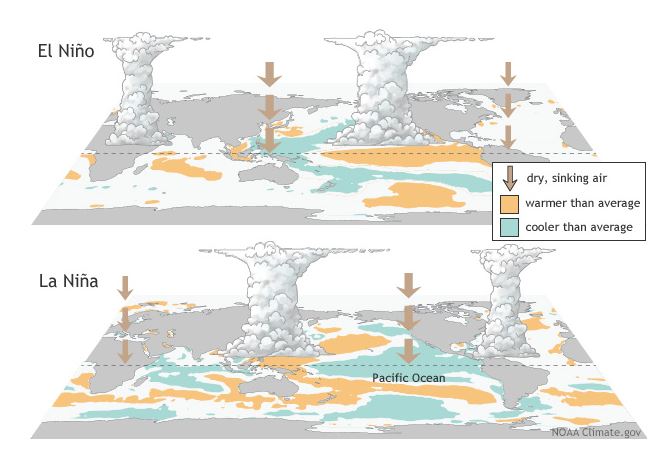Explained: Here’s how climate change will impact India’s winter season this year
According to weather scientists, India’s ongoing winter season is set to be significantly affected by climate change. The global warming will enhance the impact caused by a phenomenon called La Niña which is expected to cause a chillier winter this year. Read on to know more.


According to scientists, global warming is expected to trigger more extreme events like La Niña and El Niño which affect India’s weather pattern.
As a direct consequence of the climate change owing to the rising global temperature, the Indian winters this year are set to be drier and colder.
The forecast is based on a weather briefing compiled by Climate Trends – a Delhi-based strategic communications firm that works on raising awareness about the harmful impact of climate change on the environment.
The briefing mentioned that this year, a weather phenomenon called La Niña is set to make a comeback for the second consecutive year. La Niña has the capacity to alter direction as well as velocity of the trade winds, which trigger the winter season in India.
Also Read: IMD issues severe cold wave warning for Punjab, Haryana, parts of Gujarat and north Rajasthan
“Northwest India is now gearing up for a prolonged winter season ahead, along with some record low temperatures across the Indo-Gangetic plains,” it stated.
“As we enter into the thick of winter season, we would see a series of cold waves engulfing both the hilly as well as plains of Northwest India. Akin to La Nina season characteristics, minimum temperatures have already started plunging into the lower single digit, much below their average normal temperature,” the briefing mentioned.
Also Read: ‘Despite dropping by 30%, winter air pollution in Delhi expected to remain dangerous till 2030’
How climate change affects La Niña
According to scientists, global warming is expected to trigger more extreme events like La Niña and El Niño which affect India’s weather pattern.
According to Michael McPhaden, Senior Scientist with National Oceanic and Atmospheric Administration (NOAA), “In a warming climate, extreme El Niño and La Niña events may increase in frequency from about one every 20 years to one every 10 years by the end of the 21st century under aggressive greenhouse gas emission scenarios”.
“The strongest events may also become even stronger than they are today,” he was quoted in a news piece published on the NOAA website on November 9, 2020.
Also Read: Rising heat causing labour losses; 162 lost hours per person per year in India, finds a study
Also, according to a report by Nature published on January 25, 2015, global warming has increased the frequency of extreme El Niño that provides a favourable condition for extreme La Niña.

“This occurs amidst faster warming over the Maritime continent region (the region between the Indian and Pacific Oceans) than the central equatorial Pacific and increasing vertical temperature gradients that are conducive to extreme La Niña events. The overall increased frequency in extreme La Niña events, most of which occur after an extreme El Niño, has important implications,” the briefing quoted the report.
“It means more occurrences of devastating weather events, and more frequent swings of opposite extremes from one year to the next, with profound socio-economic consequences,” it added.
La Niña’s effect on India’s winters
La Niña involves cooling of the sea surface temperatures over the east and central Pacific ocean. It affects India by drawing in the wind blast from the northern regions of Asia, particularly Siberia. The north to south movement of the winds from Siberia towards the equator hits India intermittently and results in cold waves.

Raghu Murtugudde, Professor of Atmospheric & Oceanic Science and Earth System Science at the University of Maryland, currently Visiting Professor at IIT Bombay was quoted in the briefing as – “La Niña brings cold air from Siberia and South China over the Indian subcontinent that interacts with the tropical heating to produce a north-south low-pressure system”.
“The cold air associated with this north-south trough tends to extend much further south into India. This is remarkably different from the more northwest-southeast blast of cold air associated with an El Niño. In general, the La Niña cold air thus occupies a much larger portion of India than the El Niño cold air,” the professor added.
Other effects of La Nina on India
Climate Trends noted that the usual traits of La Niña include reduced snowfall and winter rains across Northwest India, which scientists believe would enhance stress on the Himalayas that are already dealing with rising temperatures.
“We know that warming is not going to reduce and whenever there would be poor rainfall during the winter season, it would increase the stress on Himalayan ecology. There would be enhanced climate effects on the vegetation. The situation would be quite troublesome be it for agro-forestry, vegetation or fruit production, etc. There is also a probability of glaciers retreating but at what rate is uncertain,” Jagdish Krishnaswamy, Dean, School of Environment and Sustainability, Indian Institute of Human Settlements was quoted in the briefing.
The briefing mentioned that according to experts and scientists, the Himalayas are ecologically very fragile and with anthropogenic (human-led) factors, the region is quite vulnerable to natural disasters like flash floods, landslides and torrential rains.
Argha Banerjee, Glaciologist, Earth and Climate Science, Indian Institute of Science Education and Research-Pune was quoted, “Majority of snow over the glaciers is brought by the Monsoon season. Winter snowfall is very important as it provides snow cover to the glacial ice. Snow is the only source for nourishing the glaciers”.
“It has been established that because of higher temperatures due to climate change and global warming, we see more rain than snow. If there is less snowfall, there will be less accumulation of snow over the glaciers. Also, in the absence of precipitation, spring melting season is also likely to begin early. Glaciers would be exposed to solar radiation quite early in the season, which tends to melt at a much faster rate on account of already high temperatures. And, this melting season would also be a prolonged one,” she explained.

